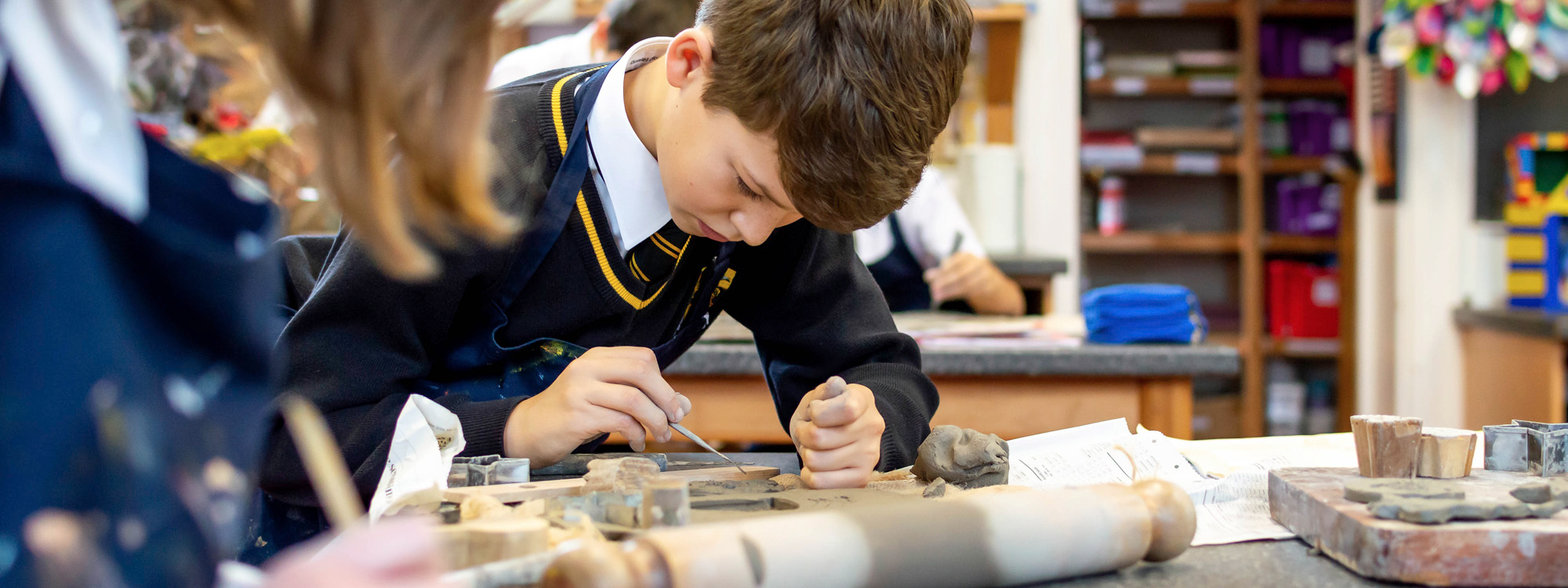Art
The Department’s role within the school is to initiate and stimulate curiosity and exploration, opening students’ minds to the vast part of the world which is only available to them through the sense of vision.
The Art Department is celebrated for its lively, diverse and focused atmosphere and for the variety of specialisms covered within the curriculum. It is well equipped for specialist activities including painting, sculpture, photography, textiles, silk screen printing and ceramics.
After being given a solid grounding in a variety of skills and styles in the lower school, GCSE and A Level students are encouraged to work to their strengths and the curriculum is carefully tailored to suit individual needs, creating independent learners.
The Department plays a major role in the atmosphere of Thetford Grammar School through displays, exhibitions, the Artist of the Month award, art workshops and entry to numerous competitions including the annual Saatchi Schools Exhibition and the International Children’s Competition in Lidice, Prague.
The Department organises trips and visits to local, national and international cities such as London, New York, Paris, Barcelona and the county of Cornwall. All students are entered for Arts Award at various levels.
KS2
Pupils from Years 3 to 6 attend lessons in the Senior School Art Department and are introduced to a wide range of mediums. We cover a diverse range of skills from printmaking to ceramics in an aim to build creative confidence using different materials. Pupils learn about artists from around the world in order to create a firm background knowledge as they move to Senior School.
KS3
Pupils are given a solid grounding in a variety of specialisms from printing to painting and from clay to textiles. Year 7 takes part in a workshop with a professional photographer and Year 8 visit a sculpture park to start their Bronze Arts Award.
GCSE
We are surrounded by Art and Design products and with the increasing popularity of Fashion, Textiles and Photography never has there been a better time to study them further. The subjects enable you to use the creative side of your brain that may otherwise lie dormant.
Within the option of ‘Art,’ pupils can cover all areas or specialise and choose either Art and Photography as an option or both Art and Photography as two separate options.
The OCR GCSE in Art & Design will encourage learners to:
- Actively engage in the creative process of Art, Craft and Design in order to develop as effective and independent learners, and as critical and reflective thinkers with enquiring minds
- Develop creative, imaginative and intuitive capabilities when exploring and making images, artefacts and products
- Become confident in taking risks and learn from experience when exploring and experimenting with ideas, processes, media, materials and techniques
- Develop critical understanding through investigative, analytical, experimental, practical, technical and expressive skills
- Develop and refine ideas and proposals, personal outcomes or solutions with increasing independence
- Acquire and develop technical skills through working with a broad range of media, materials, techniques, processes and technologies with purpose and intent
- Develop knowledge and understanding of Art, Craft and Design in historical and contemporary contexts, societies and cultures
- Develop an awareness of the different roles and individual work practices evident in the production of Art, Craft and Design in the creative and cultural industries
A Level
A lively and popular course. Students can specialise in one medium or choose. This year, students continued with their art at Edinburgh, London and UEA universities to study Textiles, Art History and Fashion respectively.
Fine Art
Pupils can explore relevant images, artefacts and resources relating to Fine Art and they will work in one or more of the Fine Art fields: Portraiture/landscape/still life/human form/abstraction/experimental imagery/installation/working in a genre.
Photography
Pupils will make an expressive and artistic response to the visual world, which is produced with the aid of lens-based media and may be manipulated by digital technology and they will work in one or more of the Photographic fields: Portraiture/ landscape/ commercial photography/ documentary/ experimental/ editorial/ installation/ moving image/ animation.
Textiles
Pupils will create visual and tactile meaning through expressive, functional or decorative responses by selecting and manipulating fibres and/or fabrics. Context within Textile Design is a significant element of knowledge. Contexts include contemporary, historical, social, religious and cultural. Pupils will work in one or more of these areas: garments/ fashion/ soft furnishings/ printed/ dyed textiles/ installation/ expressive/ digital.
Graphic Communication
Pupils will explore relevant images, text, design and resources relating to Graphic Communication. Pupils will work in one or more of the Graphic communication fields: image and typography/ illustration/ advertising/ layout design/ packaging/ editorial design/ experimental imagery/ signage/ abstract approaches.


